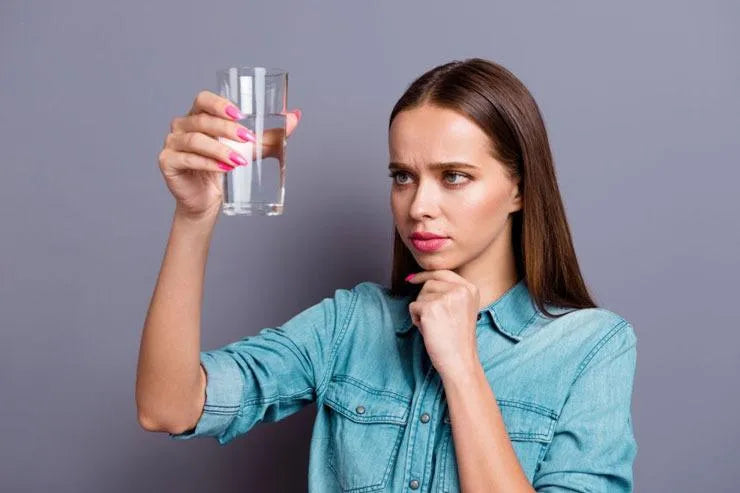It happened in Walkerton, Canada. As well as in Camelford and Newent in the U.K. And Flint, Michigan in the U.S.A.
The drinking water supply in all these towns around the world has, at one time or another, been contaminated.
In the case of Walkerton, over 2000 people fell ill. 6 people died.
We can usually depend on our local government body to ensure that our tap water is safe to drink, but the truth is that contamination can happen.
There’s even debate as to whether the level of contaminants in your drinking water at the moment is even safe.
But there are ways you can protect yourself:
1. Get your water tested
If your water isn’t clear, comes out a certain colour and has a strong odour or metallic taste, it’s a good idea to get it tested by a professional.
If your water is contaminated, a professional can recommend what further steps you can take.
But even if your water passes regulatory standards, some argue that these standards are too lenient. Harmful contaminants like PFAS are already known to be present in tap water. And some pesticides can’t always be detected, since there are so many kinds of them.
2. Don’t drink the water
You’ll think it obvious, but simply avoiding drinking water that you suspect is contaminated is an easy way to protect yourself.
But what do you replace your drinking water with?
If you use bottled water, it can still contain contaminants like microplastics. In fact, 25-30% of bottled water brands are actually tap water, and some may contain traces of pharmaceuticals, heavy metals and chemicals.
And almost all of them contain microplastics.
3. Boil your water
If your water contains bacteria and viruses, boiling it is one of the best ways of removing them.
That being said, boiling doesn’t completely purify your water of all contaminants.
While it does kill harmful pathogens, it doesn’t remove toxic chemicals, sediment, heavy metals, microplastics, or other contaminants.
4. Keep your pipes and taps clean
Sometimes your pipes and taps can be the culprits when it comes to water contamination. Make sure you regularly clean them every 6 months:
- Cleaning your taps – Lead, bacteria, mould and other debris can get stuck in the aerators (the little mesh at the end of your tap). Remove the aerators and soak them in white vinegar for a few minutes before scrubbing gently with a brush.
- Flushing your pipes – This can help remove contaminants from your water. It’s great to do if there’s been construction in your neighbourhood that’s disrupted your water supply. Remove the aerators and turn on all hot water taps (including bathtubs and showers) for 15 minutes. Turn them off, and then switch on cold water taps starting from the bottom floor (if your house has multiple levels) and work your way up, until they’re all on. Leave them running for 30 minutes. Then turn off all taps starting from the top floor and work your way down.
5. Filter your water
Installing a water filter in your home is one of the easiest ways to protect yourself from contaminated water.
Doulton’s hand-made ceramic filters reduce 99.99% of bacteria, sediment, microplastics, heavy metals (including lead) and microplastics.
They also leave healthy minerals in your water, so you know that you’re getting the most benefit out of drinking it.
You deserve to feel safe. It’s a real concern to know that tap water can be prone to contamination – putting your wellbeing at risk. You deserve to know you’re safe when you have a glass of water.
With these 5 tips, you’ll be able to feel safer when drinking water. But the easiest way to protect yourself is to filter your water. With a filter, you’ll be drinking clean and pristine water that contributes to your wellbeing.
Want to find the right filter for your home?






